#polychromy
Text

[link to tweet]
685 notes
·
View notes
Text


The Reims Stela (Autel de Reims) is one of the more impressive and complete survivals of Cernunnos iconography.
Because the weathered stone is so dull, I've always wanted to see it restored to its former polychromy glory — so I experimented with some digital colorization!
#reims#cernunnos#polychromy#polytheism#paganism#gaulish#horned god#mercury#apollo#aedicula#pagan altar#gaulish polytheism#roman polytheism
11 notes
·
View notes
Text

Woman from the colonies, Charles Cordier, 1861, marble and onyx, Musée d'Orsay, Paris.
20 notes
·
View notes
Text
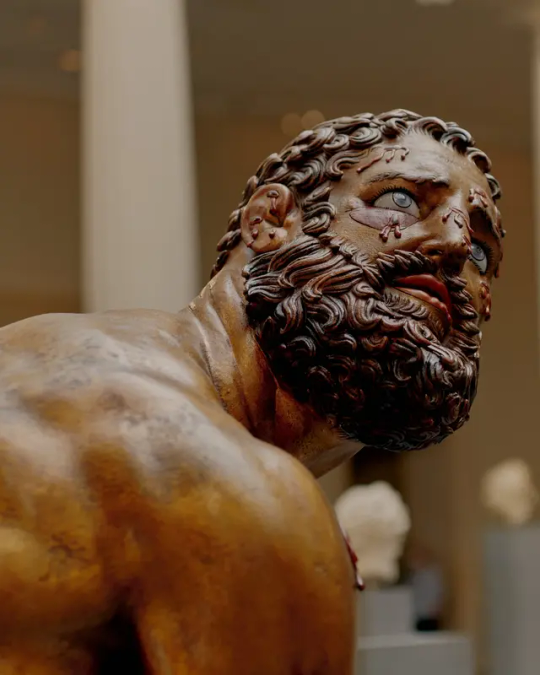

Vinzenz Brinkmann's reproductions as a part of an exhibition Chroma - polychrome statues of Ancient sculptures in color.
Featured here: the so-called Terme Boxer from the Quirinal in Rome and a marble funerary stele of Phrasikleia (detail).
Photo source: 🏺
7 notes
·
View notes
Photo

Vinzenz Brinkmann and Ulrike Koch-Brinkmann, reconstruction of the so-called Chios Kore from the Athenian Acropolis (2012),
Marble stucco on polymethyl methacrylate, natural pigments in egg tempera.
Courtesy Liebieghaus Skulpturensammlung (Liebieghaus Polychromy Research Project), Frankfurt am Main; original: Greece, Athens, marble, c. 520–500 BCE, Acropolis Museum, Athens.
The Met’s latest exhibition on Greek and Roman art brings color back to whitewashed ancient sculptures by analyzing “polychromy,” or the rhetorical uses of color. Employing 3D imaging techniques, curators developed new restorative methods to simulate how ancient works appeared in their time, placing reproductions alongside originals to exemplify the aging process.
The Metropolitan Museum of Art (metmuseum.org)
1000 Fifth Avenue, Upper East Side, Manhattan
Through March 26, 2023
#art#sculpture#colors#polychromy#reconstruction#chios kore#Athens#greece#history#style#themet#marble#stucco#restauration#vinzenz brinkmann#ulrike koch-brinkmann
52 notes
·
View notes
Text

TvT im tired, but ahh… i finished the cover and backcover for my zine.
#persephone#hades#hades and persephone#greek mythology#watercolor#ancient greece#polychromy#my artwork
67 notes
·
View notes
Text


When we talk about ancient #polychromy, we're not only referring to paint. We're also talking about *gold*, as seen in this well-preserved 1st c. CE head of a young man. Red in the hair, black in the eyes and brows, and gold all over the face. Perhaps Apollo?
—Chapps on twitter, Nov 5 2022 (source)
23 notes
·
View notes
Note
I was going to send an ask like “I don’t know what the brinkmann gods in color exhibit is but I’m curious and I’d love to hear why you dislike it!” but i just googled it and I 1000% see why you hate it now yeah
i think it's lazy histcomm lol! the ancients (certainly at least the romans) knew and used depth and perspective when painting, or painted as an undercoat for gilding, so many of these are probably really *inaccurately* reproduced ...
also i think there's a difference between arch reconstructions for journals (eg based purely on pigment evidence) and reconstructions for communicating ancient art to a broader audience with no context for ancient aesthetics and art - which should imo be based on a combination of pigmentary evidence as well as ancient art of comparable technique that was better preserved AS WELL AS where and how would have been presented (for instance, something in FLAT BRIGHT HIGH CONTRAST COLORS that's supposed to be viewed from 20 feet below in plein air is gonna hit super different at eye level in a closed museum space)
like i think a lot of ancient art is quite striking and i think even if it looks "weird" or tacky to us that's worth recognizing as it is! but i think for a PUBLIC MUSEUM DISPLAY you need to be taking audience context and response into account to a much greater extent than this exhibit did lol
you don't want people leaving the exhibit thinking "thank god the british museum scrubbed those clean"
here is an example if you haven't seen any:

23 notes
·
View notes
Text
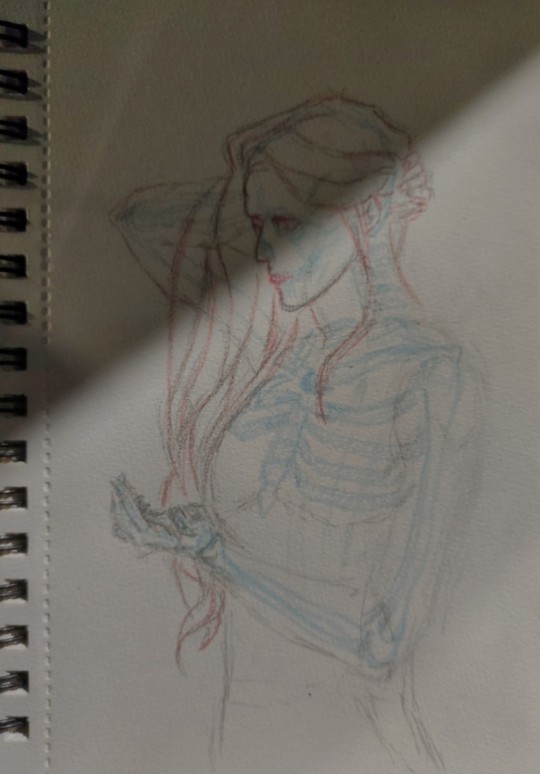
Time's running-WIP- 2022
#my art#traditional art#red and blue#pencil art#momento mori#polychromy#anaglyph#finally posting some art again
4 notes
·
View notes
Photo
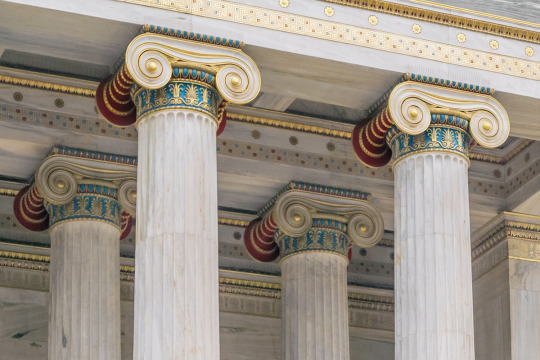
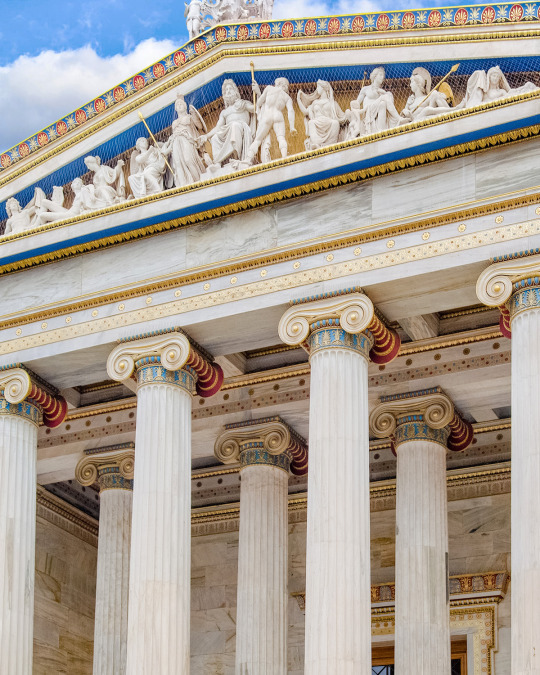

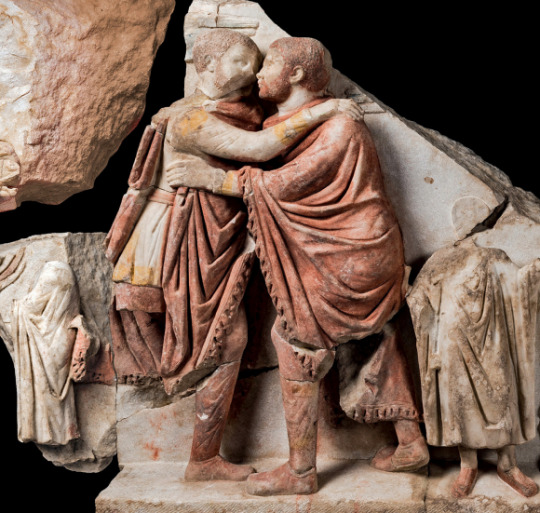
Happy Friday! We love colorful architecture, modern and ancient! Polychromy, color in ancient architecture and sculpture, was first discovered in the 19th century, and it is still startling. Buildings from the late 19th and early 20th often show classical architecture as it might once have looked: the Academy of Athens (Hansen, 1859) and the Philadelphia Museum of Art (Trumbauer, 1916-28). For the dubious, actual paint remnants on a Roman relief from Nicomedia (2nd century)!
1 note
·
View note
Photo




Happy Friday! We love colorful architecture, modern and ancient! Polychromy, color in ancient architecture and sculpture, was first discovered in the 19th century, and it is still startling. Buildings from the late 19th and early 20th often show classical architecture as it might once have looked: the Academy of Athens (Hansen, 1859) and the Philadelphia Museum of Art (Trumbauer, 1916-28). For the dubious, actual paint remnants on a Roman relief from Nicomedia (2nd century)!
0 notes
Note
I check your blog for Aypierre update (i dont have time at all to watch the streams/vod), and i speak french so if you need any help translating/understanding something, feel free to send me a DM and i'll be happy to help you :D (you can send it to this blog or my mineblr decorative-polychromy)
ah tysm! ive mostly been getting by with the in game translator and context clues but i may take you up on that eventually :D
3 notes
·
View notes
Text

🥺
15 notes
·
View notes
Text

0 notes
Text

The abduction of Persephone based on this vase

46 notes
·
View notes
Text


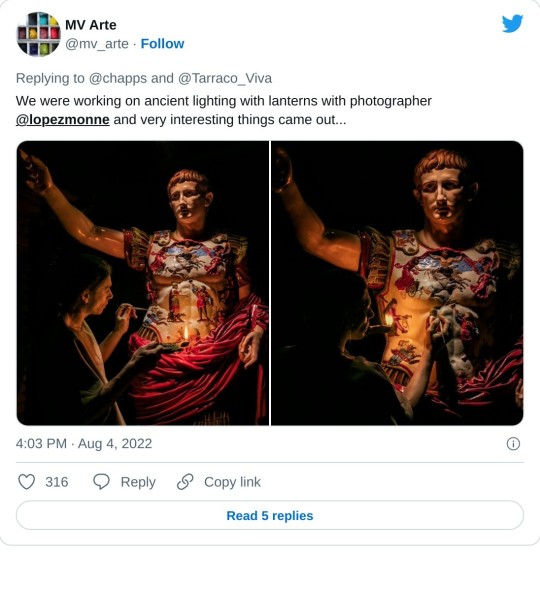
These pictures were attached to a thread regarding a new article about the still-controversial topic of polychromy in Roman statues; I haven't read the article yet, but the thread is extremely interesting! It's in Spanish, but the language is objective enough that the Twitter translation tool does a good job getting the gist of it:


#normally i look to see if anyone has already posted about it but in this case I wouldn't know where to even look tbh#anyway I just want these filed on my blog :)#sculpture#statues#césar augusto#art#policromia#polychromy#long post#i truly hate the way tumblr embeds twitter links by screenshotting them... w/e
36 notes
·
View notes